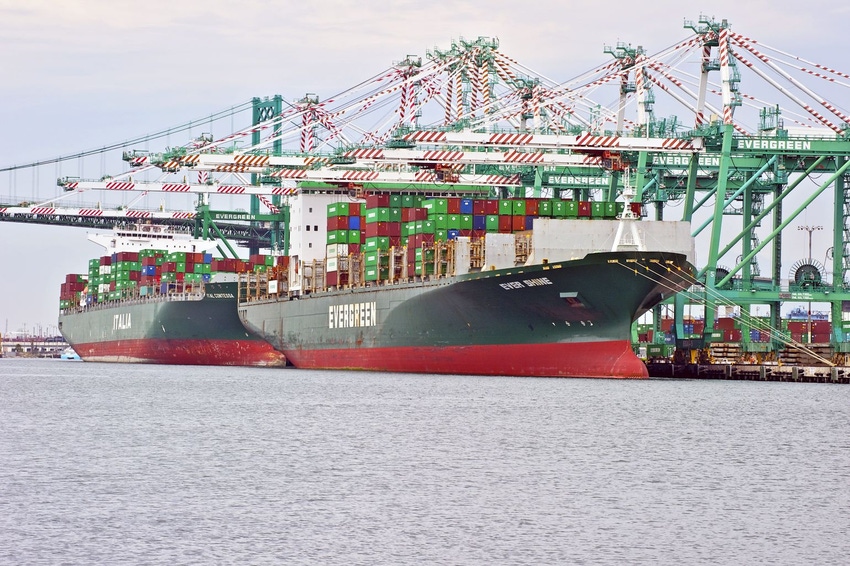Foreign Supplier Verification Programs and the dietary supplement supply chain
Larisa Pavlick of the Consumer Healthcare Products Association takes a deep dive into the impact of FDA Foreign Supplier Verification Program requirements on the dietary supplement industry.

Are you and your suppliers ready and compliant with the FSVP Rule? According to U.S. Food and Drug Administration (FDA) data, one of the fastest growing deficiencies for food and ingredient inspections is failure to implement a Foreign Supplier Verification Program (FSVP).
Defining the program
The FSVP is one of the foundational rules under the Food Safety Modernization Act (FSMA) of 2011. FSMA amended the Federal Food, Drug and Cosmetic Act (FD&C Act), making it the largest shift in food regulations since 1938, and the largest change in food regulations in over 80 years. FSVP is applicable to food ingredients, dietary supplement ingredients, and for finished dietary supplements under modified requirements.
Principles and guidances
The FSVP Rule builds on the principles established in the Preventive Controls Rule for Human Foods (21 CFR Part 117). The Preventive Controls Rule (often shortened to PC Rule or PCHF) was the first time U.S. regulations established the requirement of conducting a hazard analysis, including biological, chemical and physical hazards that are reasonably likely to occur. If a hazard is identified, a food safety plan is established, which includes a systematic, comprehensive and intentional approach for evaluation and prevention of all potential hazards. FSVP is also the internal quality program within the organization covering products from overseas suppliers.
FDA has provided guidance regarding its current thinking and intentions for appropriate hazard analysis and risk-based approach to preventive controls for human foods, and the Final Guidance for Industry for FSVP was issued in January 2023.
FDA statistics for the top deficiencies observed during a regulatory inspection are tracked on the FDA Data Dashboard. In the dashboard, within the inspections area, FDA staff shares statistics dating back to about 2009. For food deficiencies, most of the top 10 have remained consistent over time; however, there is a new kid in town: failure to develop (establish or implement) an FSVP (21 CFR Part 1.502[a]) is making its way up the deficiencies ladder and it is moving up quickly. Currently, failure to establish an FSVP has earned the number four position for food inspections, and this may include your dietary supplement ingredients, flavors, sweeteners or excipients.
Example language from an FDA warning letter for a violation of 1.502(a) reads, in part, “Your significant violations of the FSVP regulation are as follows: “You did not develop, maintain and follow an FSVP as required by the section 805 of the FD&C Act and 21 CFR Part 1.502(a). Specifically, your firm did not develop, maintain and follow an FSVP for any of the foods you import including…”
Program intention
The intention of the FSVP Rule is to ensure that all foods and ingredients imported into the U.S. meet all applicable food safety standards implemented by FDA. This means, as the FSVP importer, you are responsible for evaluating the risk of the material being imported, establishing processes for ensuring the performance of the supplier, and implementing steps to reduce or eliminate those risks.
Why FSVP is important
One of the consequences for failure to comply with the FSVP Rule is an import alert. Under an import alert, product or raw materials may not cross the U.S. border. Instead, they will be detained and refused entry into U.S. commerce.
“The final rule requires that importers perform certain risk-based activities to verify that food imported into the United States has been produced in a manner that meets applicable U.S. safety standards.” – FDA
Key learning #1: FDA defines an FSVP Importer and their roles and responsibilities (21 CFR Part 1.500)
The definition of an FSVP importer reads: “An importer means the U.S. owner or consignee of an article of food that is being offered for import into the United States. If there is no U.S. owner or consignee of an article of food at the time of U.S. entry, the importer is the U.S. agent or representative of the foreign owner or consignee at the time of entry, as confirmed in a signed statement of consent to serve as the importer under this subpart.”
When importing into the U.S. you must indicate on prior notice records who is identified as the FSVP importer. In so doing, you are also accepting the responsibility to meet the expectations of the FSVP Rule and then you are also a potential subject of an FSVP inspection by FDA.
Responsibilities for implementing an FSVP process may include the following steps:
- Conducting a Hazard Analysis (HA)
The HA is required, and it must be written.
The HA includes the intentional evaluation for biological, chemical and physical hazards with the potential to cause harm (AKA illness or injury). Chemical hazards include radiological concerns and allergens.
- Establishing scientifically appropriate Preventive Controls (PC) when a hazard is identified.
Consider one or more of the four types of PCs, including allergen, process, sanitation or supplier controls.
A PC is established to eliminate or reduce the identified hazard.
Validation is required for any process controls. An example of a process control may include a “kill step” to control for a pathogen.
- Implementing Foreign Supplier Verification processes and controls as defined by the Rule.
- Monitoring
- Record-keeping
The collection of documentation from these five steps will be included in a Food Safety Plan (FSP). The FSP process includes identifying the hazard and the appropriate preventive controls to reduce or eliminate the hazard, foreign supplier verification processes/procedures, at times validation, corrective actions and required records.
FDA has created a document called the Foreign Supplier Verification Programs for Importers of Food for Human and Animals (FSVP) Regulations Requirements, which is a valuable tool and guidance for records requirements. This document is written in a checklist style and provides a list of required records from the FSVP regulation.
An HA and/or the FSP could be requested from your foreign supplier. It is advisable to review and approve these plans and related records as part of your supplier qualification program and to reevaluate them on a regular basis.
Key learning #2: The FSVP rule authorizes FDA to conduct remote regulatory inspections for FSVP
For the first time in food regulation history, the FSVP Rule authorizes FDA staff to conduct remote regulatory inspections to evaluate compliance for imported goods. Most likely a firm will receive notification from an FDA investigator who will ask them to submit their FSVP for review. The trigger for this request may come after reviewing import reports where a firm is identified as the FSVP importer. Being prepared for an FSVP inspection is essential. The window for submission of your FSVP records, via the electronic portal, is very narrow.
The initial compliance dates for the FSVP Rule are phased out, unlike other FDA rules. Depending on several variables—including size, type of food and regulatory requirements of that food—most importers were required to reach FSVP compliance from 2017 to 2018. Typically, after the initial compliance dates are reached for a new rule, it may be 12 to 18 months before regulatory inspections begin to occur. This is the phase often referred to by FDA staff as “educate while we regulate.”
Ironically, the initial inspections for FSVP with authorized remote regulatory assessments became a reality at about the same time as the world was hit by the Covid-19 pandemic. I mention this as we jump into the numbers of FSVP inspections. I suspect there may have been extra attention to FSVP during this time, versus on-site inspections for GMPs (good manufacturing practices). FDA investigators, like much of the world’s workforce, suddenly began to work from home or only on mission-critical work. This shift may have potentially impacted the numbers seen for FSVP inspections and regulatory actions.
Per the FDA Data Dashboard, there have been approximately 3,130 FSVP inspections from 2017 to 2023. Among these inspections for human foods and cosmetics, 240 were classified as Official Action Indicated (OAI) and approximately 2,870 classified as Voluntary Action Indicated (VAI), and 24 were classified as No Action Indicated (NAI).
OAI is the most serious FDA classification related to failure to comply with a regulation.
Typically, because of an OAI classification, you will see further FDA regulatory action, including an untitled letter, a warning letter, or a regulatory meeting. If serious behaviors or deficiencies are not corrected voluntarily, more serious action like a seizure, injunction or other criminal penalties may follow for a domestic inspection. For foreign or FSVP inspections, FDA has additional tools available to them for imported products or materials that “appear” in violation of the FD&C Act. In this case, the FDA can impose an import alert.
During a VAI inspection, an FDA Form 483-Inspectional Observations is issued, documenting deficiencies. Typically, a VAI classification indicates the firm was given the benefit of the doubt, and the firm is willing and able to make the necessary corrections on its own, without FDA intervention.
An NAI classification means there were no documented deficiencies. Only 24 companies have a perfect record during an FSVP inspection to date. There is room for improvement and as a responsible industry we can and will do better. Now is the time to modernize your quality systems, seek out training, or work with a trusted consultant.
In 2021, there was a spike in FSVP inspections, and they reached an all-time high with a total of 771 FSVP inspections. In 2022, the numbers were down slightly and included 670 FSVP inspections. So far in 2023, numbers are down again. However, the FDA fiscal year has a few more weeks to go (as of writing this article) and there are likely a multitude of unreported inspections as the fiscal year comes to an end. So far, as of Sept. 11, 2023, there are a total of 517 inspections reported in the FDA Data Dashboard.
To place these FSVP numbers into perspective, the Office of Dietary Supplement Programs (ODSP) has repeatedly reported about 600 dietary supplement inspections per year or about approximately 50 per month. Since 2021, there are more FSVP inspections per year than dietary supplement inspections per year.
As far as regulatory classifications for these FSVP inspections, in 2023, the FDA Data Dashboard shows an average of nine OAI inspections per month. There are also, on average, 45 VAI FSVP inspections per month. That is a total of over 55 FSVP inspection classifications occurring per month.
The consequences for failure to establish an FSVP are dependent on the FDA compliance office; however, on Nov. 21, 2022, import alert #99-41 was issued for “Detention Without Physical Examination of Human and Animal Foods Imported from Foreign Suppliers by Importers Who Are Not In Compliance with the Requirements of the Foreign Supplier Verification Program (FSVP) Regulation.” While subject to an import alert, product or raw materials will not cross the U.S. border. This will have a dramatic impact on your supply chain while materials are detained and refused entry into U.S. commerce. Are you and your suppliers ready and compliant with the FSVP Rule? Are you and your suppliers aware and prepared?
Helpful tips for responsible dietary supplement brands:
- Understand your roles and responsibilities as an FSVP importer. The organization who meets the definition of the “importer” must develop a written FSVP verification procedure.
- Review and approve the manufacturer HA and potentially the FSP for imported goods and understand their processes.
- Evaluate the risks and appropriate labeling for allergens for all imported products and review allergen controls at your manufacturers, including storage, cleaning and labeling.
- Conduct appropriate verification activities, including one or more of the methods listed within the regulation:
Test and monitor to verify the PC is effective (this is slightly different than a test and release program). This process is to verify a specific preventive control and is monitoring for the identified hazard(s).
Review food safety/manufacturing records to verify the parameters identified in the FSP were reached for the identified hazard.
Perform annual audit for Serious Adverse Health Consequences or Death to Humans or Animals (SAHCODHA) hazards or justifications for less than one year between audits.
Other – FDA allows you flexibility to determine a system different than those mentioned above.
About the Author(s)
You May Also Like






.png?width=800&auto=webp&quality=80&disable=upscale)